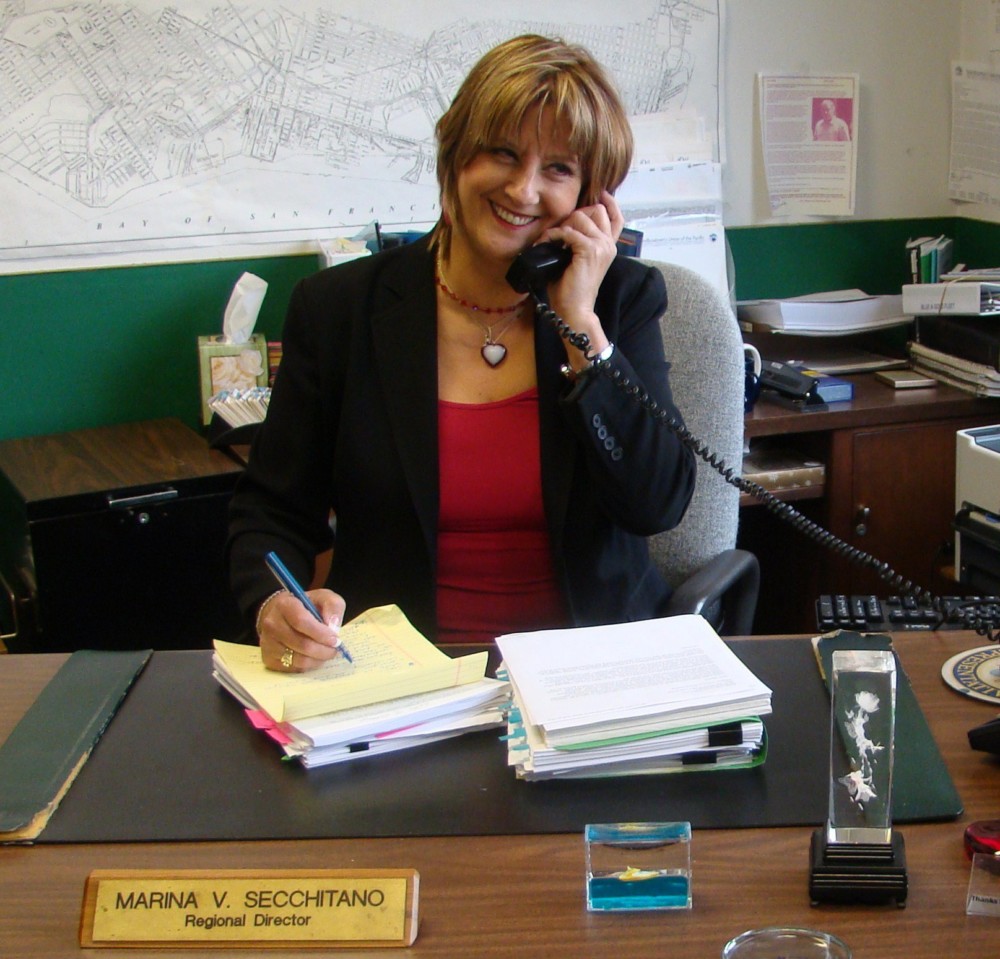By Carl Nolte
San Francisco Chronicle
WWR Article Summary (tl;dr) At the end of last year, Marina Secchitano of San Francisco defeated two men to be elected national president of the Inlandboatmen’s Union of the Pacific, which represents ferry and tugboat workers. She is the first female head of a seagoing labor organization.
San Francisco Chronicle
It wasn’t long ago that the maritime industry was a man’s world.
It was part of the culture in books, movies, songs and legends. The sea captains, sailors, explorers, naval heroes, even the pirates were all men. It was ingrained in the language: seaman, helmsman, fisherman, longshoreman, yachtsman.
The world has changed in recent years. Now there are female admirals, ship captains, ferry skippers, deckhands, marine engineers, maritime executives.
At the end of last year, Marina Secchitano of San Francisco defeated two men to be elected national president of the Inlandboatmen’s Union of the Pacific, which represents ferry and tugboat workers. She is the first female head of a seagoing labor organization.
It’s a sea change, so to speak.
The future of women in the maritime industry is with the young people starting out in sea careers.
One of them is Bonnie Muchnick, a 24-year-old Oakland woman in her first year as a seagoing officer. She is third mate on a tanker, carrying cargoes of gasoline and diesel fuel on the Mississippi River, across the Gulf of Mexico to Florida ports.
Muchnick represents new blood in an old-line company. She sails aboard the Legacy, a combination tug and barge that is 748 feet long, has an engine that develops over 16,000 horsepower and can carry 327,000 barrels of gasoline and diesel. When she is on the bridge, she runs a ship and cargo worth millions of dollars.
The Legacy is owned by Crowley Maritime, a family-owned firm that got its start on San Francisco Bay with a single rowboat back in 1892. Now it is a $2.2 billion company with worldwide operations and an eye on the future.
Which is where Muchnick comes in. Growing up in Oakland, the bay and the Oakland estuary always in the background, she learned to sail and fondly remembers her first solo voyage. “When I was really young, I sailed an El Toro — a small sailboat — all the way across Lake Merritt all by myself,” she said.
One day, when she was at Bishop O’Dowd High School in Oakland, she went to a job fair and saw some material about the California Maritime Academy in Vallejo and careers at sea. “I had no idea,” she said.
The maritime academy is part of the the state university system and is selective. “I didn’t get in the first time I applied,” she said. But she persisted, was admitted and earned a Crowley Maritime scholarship.
It’s a four-year course, everything from marine transportation studies, seamanship, leadership, modern electronics, even old-school celestial navigation. She was the cadet watch officer aboard the training ship Golden Bear in Long Beach in her senior year. When it was time to sail, she took the ship out to sea. Everyone was watching: the captain, the pilot, the other cadets. She was running the ship. No one ever forgets something like that.
She graduated last spring with a bachelor’s degree and a third mate’s license in the United States Merchant Marine. Crowley offered her a job and she went to work that summer.
Muchnick reported aboard the Legacy as the most junior officer. There are 14 mariners in the crew. She is the only woman. Sexism and all kinds of bad behavior are in the news these days. Has she had any trouble?
“No, no,” she said. “They see me as part of the crew. They all want me to do well.”
Muchnick works the 8-to-12 watch, taking over on the navigating bridge at 8 in the morning and again at eight at night. She has other duties as well, including working with the cargo of gasoline and diesel. It’s a 12-hour day, usually, 45 days on and 45 days off, and she is paid $94,000 a year.
A typical voyage on the Legacy starts at the refinery at Garryville, La., heads down the Mississippi, for 145 miles, past New Orleans and into the Gulf of Mexico then east to Tampa, Fla., to deliver the cargo.
A river pilot does the navigating on the Mississippi, and a harbor pilot in Florida. The captain is always around, but much of the time, she is on her own.
“Every single day, I learn something new,” Muchnick said. “And every day is different. I like it, I really do.”
Most of the time, the trip is routine. But in September they ran into Hurricane Irma on the Gulf. “We had 20-foot seas for three days,” she said. “We did a lot of rocking and rolling. I had the watch. It was interesting, to say the least.”
Like any 24-year-old at the beginning of a career, Muchnick has goals. She’d like to work in tugs, for one thing, and work her way up to be a captain, and then maybe a ship pilot, a job that takes long experience and a lot of skill.
She’s aiming high.














































































































































































































































































































































































